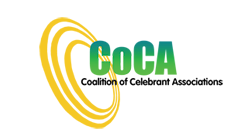Few Australians understand the complexities of our Marriage Act. The Act was established in the middle of the last century based upon British legislation pioneered in 1836. Unlike France, where all couples must attend a registry office to legally marry, in Australia, couples can choose from 4 types of marriage celebrants:
- Independent Civil Marriage Celebrants (Subdivision C)
- Independent Religious Marriage Celebrants (Subdivision C)
- Religious celebrants from Recognised Religions (Subdivision A)
- Marriage Officers in State and Territory Registry Offices (Subdivision B)
This is because the civil function of witnessing and registering a marriage according to civil law has been granted by our Federal Parliament to these different groups, including religious ones.
A. What makes our Marriage Act special is the first group - Independent Civil Marriage Celebrants.
Unlike the UK, where couples can only marry at venues the government designates Registry Office Staff to perform marriages, our group of independent civil celebrants are authorised to marry anywhere within Australia. Even Prince Charles could not choose to marry Camilla anywhere in the UK!
This was a world first when our category of marriage celebrants was established in 1973 and is unique as it allows personalised ceremonies for couples to:
- choose a marriage celebrant whose character, style, skill and values match their own.
- choose when and where they marry - at anytime day or night, any day of the week, any week of the year.
- work with their marriage celebrant to have a unique ceremony designed to match their values, their personal needs and the needs of their family and friends.
- have a beautiful, meaningful, ethical and dignified ceremony, without discrimination on the basis of religion, as can occur in some countries.
The other three groups offer restricted or standardised - one size fits all ceremonies. Religious celebrants are required to the approved standard ceremony for all couples of that particular faith, and is how the Recognised Religion's marriage celebrants must work under the Marriage Act. They are not supposed to operate as a business nor make a profit from conducting marriages. The Registry Offices offer restricted services as officers are employed at hourly rates and government services are not supposed to make a profit from the public.
B. Another special feature regarding our Marriage Act is the basic equality afforded adult males and females.
All marriage celebrants, whether religious or civil, employed or independent professionals, must ensure the same conditions are present before witnessing and registering a couple's marriage according to law. That is, the parties to the marriage must be:
- Adults - no child brides or grooms;
- Capable of making a free and informed decision to marry - no forced marriage for men or women
- Not currently married to anyone else - no polygamous marriages (neither polygyny, polyandry or group marriage).
Court approved marriages for those under 18 years of age, will only allow one party to be between the ages of 16 and 18 years (whether male or female) and no person under 16 years can legally marry in Australia.
C. The Marriage Act grants special privileges religious celebrants.
Religious celebrants have been granted the right by our government to conduct marriages on behalf of the Commonwealth of Australia. This happened because in 1961, when the Commonwealth assumed the responsibility for marriage, the existing groups providing marriage services in the states and territories were allowed to continue these functions. It could have been otherwise.
The government granting rights follows the historic development of marriage, which started and was, in Western tradtition, for over a thousand years (CE) a civil relationship, with witnesses and documentation coming much later. Churches were involved in the latter phase because priests in most villages were the only literate people able to perform such a task.
In France, no religious marriage ceremony is legal under French Law. This is the case in many countries.
In Australia, Sections 45 and 46 grant the religious celebrant the right to perform according to their religious rites, whether the ceremony requires public consent to the marriage by the couples or not, and Section 46 exempts celebrants from Recognised Religions from needing to give a definition of marriage and make a declaration that they authorised by the government to also witness and register the marriage.
Under Section 113 of the Marriage Act, religious celebrants can not only witness and register a marriage on behalf of the government, they can also conduct a second religious ceremony, provided the couple are already married. In France religious celebrants cannot perform legal marriage so are conducting a second non legal religious ceremony for couples who are already married.
Section 113 allows non-authorised religious celebrants to conduct second marriage ceremonies for their couples, which is not allowed for civil celebrants and their couples under the Act.
Section 47 allows religious celebrants (Subdivision A and C) the right to discriminate against any couple on any grounds, and to add extra conditions on the couple before they can be legally married in a religious ceremony.
Thus changes to the definition of marriage would not force any religious celebrant to conduct marriage ceremonies against their church's religious beliefs about marriage.
The positive side of the Marriage Act is that
- citizens' personal religious beliefs and the freedom to practise their choice of religion are respected
- religious couples have the freedom to both marry according to civil law and religious law in the same ceremony.
The negative side of the Marriage Act is
- the public's inability, and perhaps even the marrying couple's inability, to know whether the religious wedding ceremony is valid according to law
- the erroneous assumption that marriage is a religious relationship because of lack of a clear divide between church and state and the historic roots of marriage in Australia.
This situation can inadvertently contribute to concerns about Child and Forced Marriage as guests at a wedding cannot be assured the religious wedding ceremony is valid according to Australian law.


